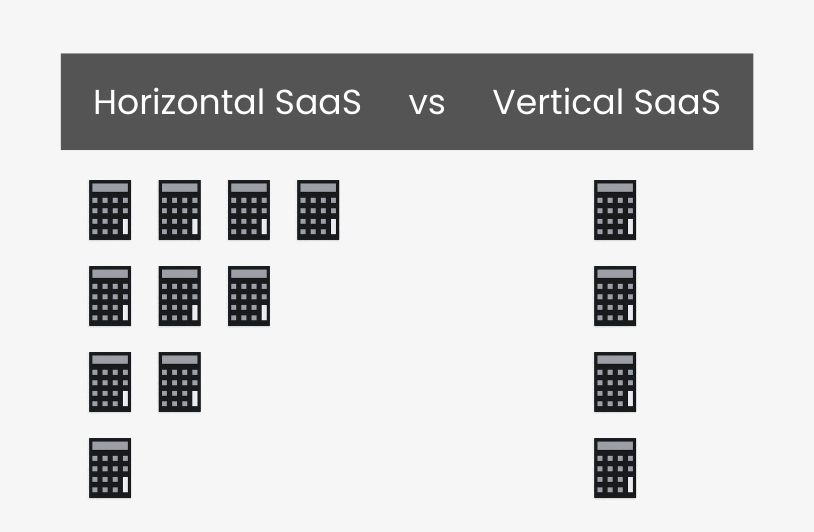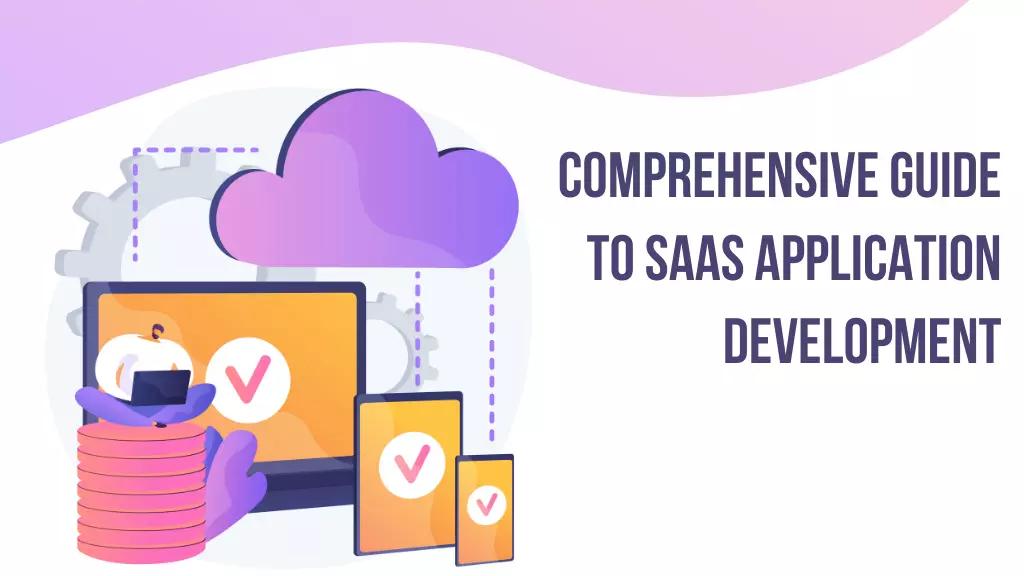SaaS Application Development. With the continuous advancement in technology, the IT market has grown exponentially and continues to grow with time. These advancements have made things easier for businesses, individuals, as well as developers.
One such buzzword that is common nowadays is Cloud Computing, which has time and again proven its capability to help businesses ace the market trends, and is expected to reach a whopping $495 billion, in 2022.
Now defined, Cloud computing is a network of remote servers connected via the Internet to store, manage, and process data. There are three main types of cloud computing services namely Infrastructure-as-a-Service (IaaS), Platforms-as-a-Service (PaaS), and Software-as-a-Service (SaaS).
Read: Top 5 CRM Software for Small Businesses
Although all the types of cloud computing services have their pros and cons, the objective of this article is to provide detailed information on SaaS application development, with its benefits, features, cost of development, and other important factors.
What is SaaS Application Development
Also known as Software-as-a-Service, SaaS Application is what the name suggests i.e. providing software as a service, where a cloud provider or third-party hosts applications and makes them accessible for the end-users over the internet, without installing them on the device.
In other words, it can be said that it is a software delivery model which is hosted centrally and is delivered to the end-users on a subscription basis.
Read: What is SaaS Management and How to Choose the Right Tools
As per the insights from Statista, the SaaS market is projected to reach $208 billion by 2023 and will continue growing as organizations and enterprises are adopting SaaS solutions quickly for a variety of business operations.
Well-known corporate users of SaaS applications are Google Docs, Microsoft Office 365, Adobe Creative Cloud, Slack, HootSuite, and many more.
Key Benefits of SaaS Application
SaaS has become a common software for almost every other business. It caters to almost all the business needs and has beneficial payoffs for both the business or the end-users and also the service providers. The primary benefit of SaaS App development is that it is quick, secure, reliable, and easy to use, which helps all the users of the application.
Read: Best Secrets Management Tools For Application Security
The characteristics that make SaaS apps different from other applications in the market include the Multi-tenancy model, Subscription-based billing, High availability, Elastic infrastructure, Data security, Application security, and many more. We have described them below for your reference.
Read: What is Custom Software Development
SaaS applications provide a plethora of benefits to their users. Be it increasing productivity, or enhancing the work, it serves all purposes and makes a business hassle-free. Below we have mentioned a few of the pros of using the SaaS Application.

Benefits of the SaaS app for the end-users -
-
It is economical for every user. It comes with a subscription plan, which is flexible as per the requirements which implies if you want that software for business purposes or individual use.
-
It also saves time, by providing ease of collaboration with team members and also lets you access files by syncing across multiple devices.
-
Users can access the application on their web browsers, without the need to install them on their device from anywhere, all they need is an active internet connection.
-
An added advantage is that it is Scalable, which means that users can upgrade/downgrade their plans as per their requirements. It offers the customers the option to access services based on their specific needs, and the users only pay for what they use with no hidden charges.
-
In case of server downtime, cloud servers automatically call on additional copies of an app to disperse the burden if an app receives too many requests.
-
Individuals and Businesses do not have to worry about support and maintenance of the SaaS product that they are using, it will be done by the software owner, in case anything happens.
-
Users can customize the SaaS product as per their business requirements and is compatible with multiple platforms.
Benefits of the SaaS app for the software service providers -
-
The end-users do not have access to the source code, making it secure for the users and also for the app's source code.
-
Since it is a subscription-based model, there is a continuous and steady flow of revenue as long as the customers use the software.
-
You can update the app without empowering any downtime for the users. Here a copy of the previous version keeps functioning on the user end until you update the app and the updated version goes live, which replaces the previous version.
These few benefits are the core reasons to why businesses and individuals use SaaS applications, also, it not only caters to the needs of every individual but also serves all the business purposes.
Read: What is scope creep in project management
Although there are a few pitfalls, they can be eliminated with proper planning and thorough research before developing the application.
The Architecture of the SaaS
SaaS applications are licensed and centrally hosted on a subscription basis, where a single module with a singular configuration is made accessible to different users. An alternate version of the application can be created (generally before the final release in the market) to let the customers access the new features of the application, which aims to test the new feature's success in the market. To build an SaaS-based application, you can choose from the following architecture-
Besides, SaaS has two different versions namely Horizontal SaaS and Vertical SaaS.
The Horizontal SaaS deals with tools developed for sales and marketing, developer tools, and many more. Hubspot, a marketing tool, is an example of a Horizontal SaaS application.
Read: 7 Must-Have SaaS Tools for Successful Remote Team
The Vertical SaaS serves the requirements of a specific industry like retail, healthcare, and many more.

SaaS Application Development Cost
How much does it cost to develop a SaaS application? The development cost of SaaS application or product is between $45000 to $500000. The cost is an important factor in developing software for a business especially when it is based on a subscription fee to provide access to the users. The SaaS application development cost depends on multiple factors like the features and complexity of the application, design, programming, maintenance, and many other important aspects like the location of the development company, per hour charges of the developer, and tech stack.
Read: SaaS User Onboarding: What You Need to Know and Why
It might cost you above your planned budget but it is a one-time investment especially when you are developing an app based on a subscription model. You will get the return on investment on the model within no time with a proper marketing plan for the SaaS application.
Summing Up
SaaS applications can be used for Team Collaboration, Creating Websites And Online Forms, Automated Billing Systems, Easy data connection, and several other business requirements. Developing a cloud-based application can be complex but big corporate giants like Google and Microsoft are using the SaaS service and generating more revenue with these applications.
Read: On Demand Solution
The SaaS has reduced the workload as well as the complexity of managing data as compared to the traditional method. So if you are thinking of developing a cloud-based application, we would suggest you go for it with proper planning and execution.
Read: What is Twelve-Factor App Methodology In Web App Development

